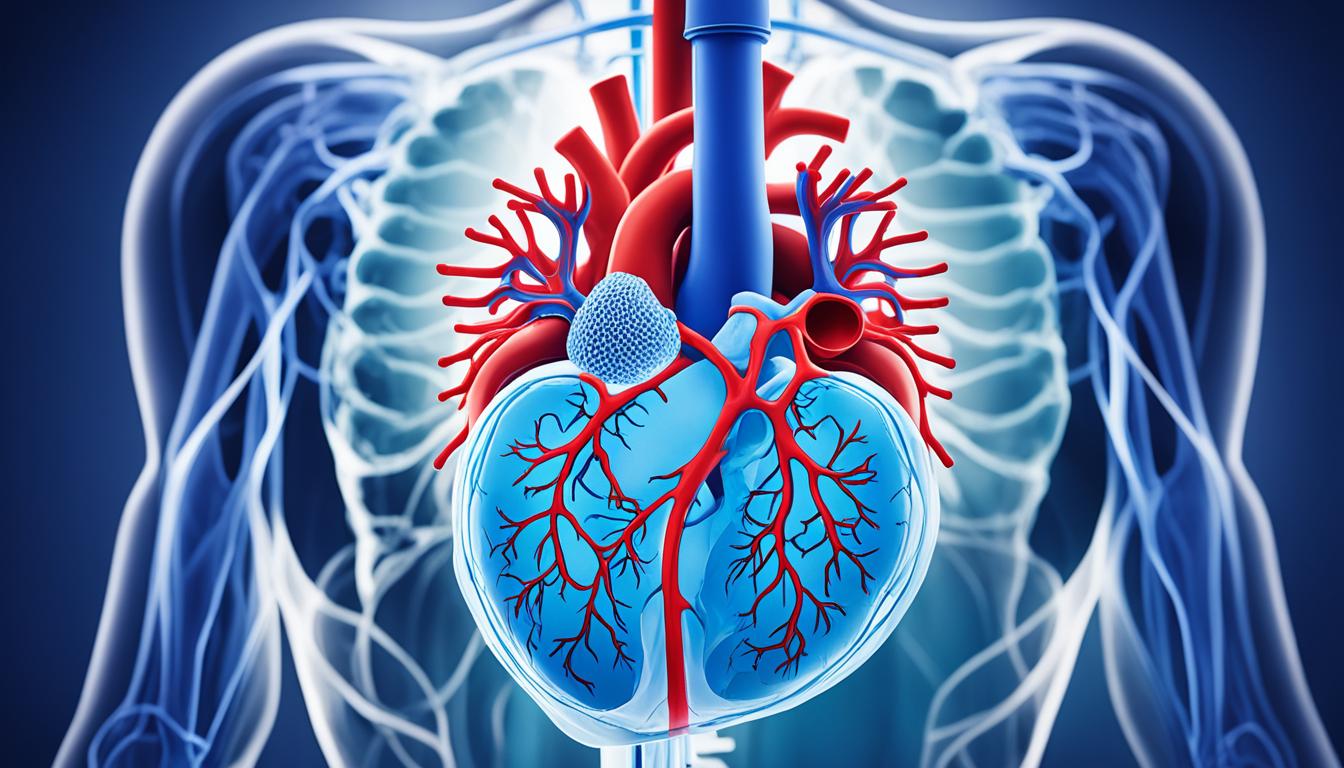Pulmonary atresia with ventricular septal defect (PA-IVS) is a rare heart condition. It impacts less than 1% of heart disease patients. This condition means there is no connection between the ventricles, and the right ventricle may not fully develop. The reason for PA-IVS is not clear, but it may stem from issues during early fetal growth.
About 4 to 8 babies out of 100,000 are born with PA-IVS. The chances are higher if we include instances of stopping pregnancies after diagnosing severe heart issues. Doctors can find this condition before birth with special heart tests. Signs of PA-IVS in babies include a blueish skin color, low blood oxygen, and weak heart pumping. Diagnosing PA-IVS mainly involves using echocardiograms, but sometimes a heart catheterization is needed.
Key Takeaways:
- PA-IVS is a rare form of congenital heart disease.
- Symptoms include cyanosis, desaturation, and signs of low cardiac output.
- Echocardiography is the primary diagnostic tool.
- The precise cause of PA-IVS is still unknown.
- Stem cell therapy shows promising results for the treatment of PA-IVS.
Etiology and Epidemiology of Pulmonary Atresia with Ventricular Septal Defect
Pulmonary atresia with ventricular septal defect (PA-IVS) is a complex congenital heart issue. It happens when the heart doesn’t form right before birth. Doctors are still figuring out what causes this.
One idea is that something initially goes wrong with the pulmonary valve’s growth. This makes the valve unable to open. Another thought is that issues with a vein’s valve might reduce blood flow, leading to problems. Also, some believe the growth of heart arteries could be linked to PA-IVS.
PA-IVS isn’t common, occurring in 4 to 8 out of every 100,000 births. Yet, these counts might rise if we include terminated pregnancies. It’s ranked the third among major cyanotic heart problems. And, it usually isn’t linked to genetic issues.
The cause of PA-IVS is still not completely clear. It likely stems from heart development issues early on. More study is essential to truly grasp the causes and processes of this condition.
Clinical Presentation and Diagnosis of Pulmonary Atresia with Ventricular Septal Defect
Pulmonary atresia with ventricular septal defect (PA-IVS) is a complex heart issue at birth. Knowing the signs and getting a correct diagnosis early is key. This helps in managing and treating the condition on time.
Clinical Presentation
PA-IVS mainly shows as blueness and lower oxygen in babies. They may look blueish, especially their skin and lips. These signs are usually seen right after they are born.
Other signs include fast breaths, finding it hard to breathe, and not feeding well. These are because the blood flow is not normal, so organs don’t get enough oxygen.
Doctors can spot PA-IVS by hearing certain heart sounds and murmurs. These are signs of a heart valve leak or unusual blood flow. It helps confirm the condition.
Diagnosis
Echocardiography is the main way to spot and diagnose PA-IVS. It’s a safe imaging test that shows the heart’s structure and how it works. It’s a crucial step in treatment planning.
This test can clearly show the issues in the heart, like closed valves or holes. It also tells how severe the problem is. This info guides the treatment plan.
Sometimes, more heart checks are needed. A procedure called cardiac catheterization with angiography can do this. It gives a full look at the arteries around the heart.
This combined process helps doctors confirm PA-IVS, check its severity, and make a treatment plan for each child.
New diagnostic tools and technology help find PA-IVS early. Early detection leads to better care, improving the lives of those with PA-IVS.
Stem Cell Therapy for Pulmonary Atresia with Ventricular Septal Defect
There’s a new treatment in town for heart issues like pulmonary atresia with ventricular septal defect. It’s called stem cell therapy. This method uses stem cells from sources like umbilical cord blood to help pump blood better from the heart’s right side. Tests on animals and people have shown some good signs.
The cool part is, these special stem cells can either help make heart valves from tissues, or go straight into the heart to fix and heal it. Lots of work is still being done to make stem cell therapy work even better for cases like pulmonary atresia with ventricular septal defect.
But, we need more studies to be totally sure how safe and effective stem cell therapy is in the long run. Even with this challenge, the chance to lessen the impact of heart issues in kids is big. This new way of treating heart defects brings hope and pushes the field forward.

